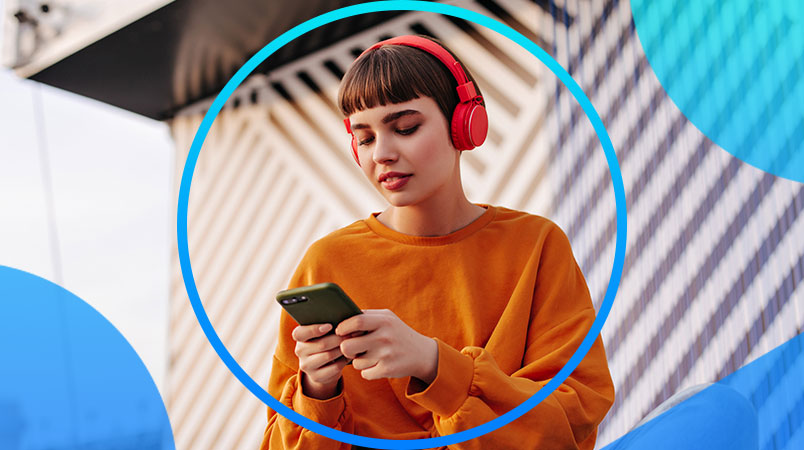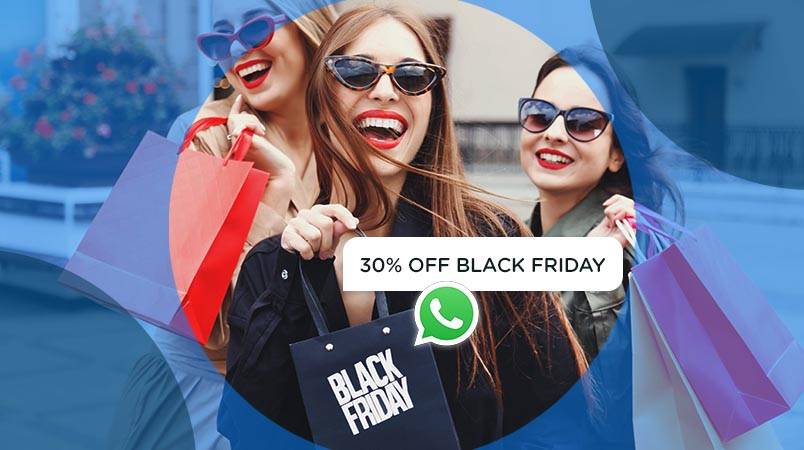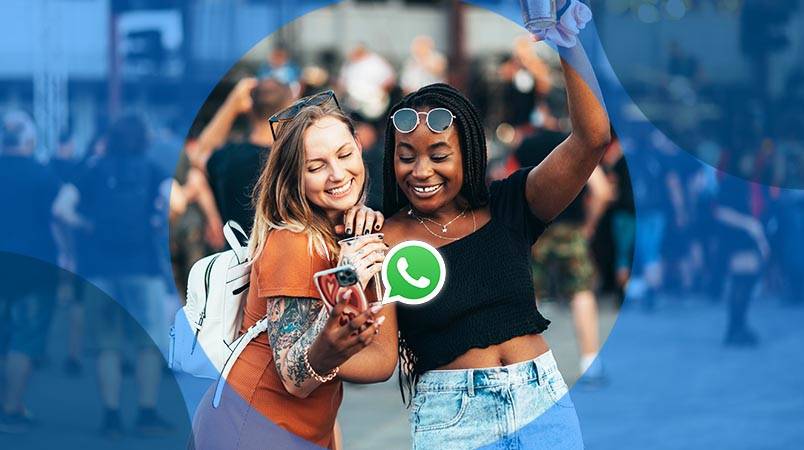I. Conversational Chatbots
The use of conversational chatbots is on the rise. Chatbots respond to customer questions that mimic human interaction through a combination of pre-programmed scripts and artificial intelligence (AI).
Chatbots can make (and cancel) reservations, conduct surveys, place orders, answer questions – and the list keeps growing. Chatbots also enable you to learn more about your customers as the chatbots interact with them, creating future marketing opportunities and increasing engagement.
The ability to provide service 24/7 improves customer satisfaction while reducing the need for support staff, saving your business money and time. As chatbots “mature,” they can produce answers to frequently asked questions by gathering data from previous exchanges. This ever-expanding information database gives customers the information they need and reduces programming expenses.
II. User-Generated Content
User-generated, or UGC, continues to be a highly impactful form of marketing. UGC is content related to your brand – text, images, audio, and video – that users voluntarily create and post online. Unlike influencer marketing, in which users are sought out and paid by marketers, user-generated content engenders a higher degree of trust based on real-life, unpaid experience and opinions.
User-generated content can be a double-edged sword. If UGC is positive, it can generate priceless word of mouth that drives sales and trust in your brand and products. However, negative content can do just the opposite, ruining your customers’ perception of your brand and damaging trust.
Examples of user-generated content include:
- Blogs
- Customer reviews on Yelp, Reddit, and other forums
- Social media posts on Instagram, YouTube, TikTok, Facebook, and Pinterest
III. Social Commerce and Shoppable Ads
In the past, shoppers would discover products and brands while browsing social platforms, then navigate to the brand’s website to make a purchase. But toggling between platforms can disrupt the user experience brands strive to create, resulting in customer frustration and lower conversion rates.
The eye buys! Social commerce and shoppable ads integrate commerce into social media platforms, enabling a seamless shopping and brand experience.
Social commerce uses social media platforms like Instagram, Facebook, and Twitter to promote and sell products and services. Shoppable ads enable your brand to tag products within an image posted on social media or Google, giving the customer the ability to hover over the ad for more information.
IV. Mobile Commerce Growth
Not surprisingly, the scale of mobile commerce, or m-commerce, has grown exponentially. The pervasive use of mobile phones and tablets has paved the way for m-commerce to take a larger piece of the internet marketing pie. Mobile sales are expected to increase by 22.3% to a staggering $3.56 trillion in 2021.
With consumers getting increasingly comfortable shopping online, optimizing your website for mobile is crucial. The impact of COVID-19 has further pushed consumers away from shopping malls and toward online shopping sources. To capitalize on this mobile trend, make sure to remove all barriers to shopping online for your customers.
V. Location-Targeted Mobile Ads
Location-targeted mobile ads are coming into their own as a way to serve location-focused ads to consumers on the go. According to industry forecasts, targeted mobile advertising spending in the United States is forecasted to surpass $32 billion by the end of 2023.
Location-targeted ads have shown to be a remarkably effective way of cutting through marketing noise, delivering offers that meet consumers’ needs at just the right time.
Bluetooth technology helps determine the perfect time and place for ads to be served, increasing the likelihood of customer engagement. When your target audience is within a specified radius of your location, encourage them to stop in with ads customized to their preferences.
VI. Rapid 5G Adoption
5G is the newest technology standard for broadband cellular networks. 5G enables marketers to provide engaging data-heavy experiences that were previously unavailable due to bandwidth and speed limitations.
As consumers upgrade their devices to take advantage of carriers’ 5G technology, marketers must be ready to exploit its capabilities to the fullest.
5G offers increased bandwidth to enable high-definition VR experiences and 4k streaming video, along with high-speed data delivery.
The race is on for brands to harness the power and opportunities that 5G will create – before your competitors do.
VII. Augmented Reality
Not long ago, virtual reality (VR) was to be the next innovation in video gaming. Augmented reality, or AR, has taken the VR concept and adapted it to a new generation of internet marketers.
5G technology could mean wider adoption of augmented reality for in-store or online uses. AR enables customers to “try before they buy” by simulating product usage in their home or other environments. Examples of brands using augmented reality in marketing include:
- The Ikea Place app allows people to take a picture of any furniture they see. The app then finds similar or matching IKEA products for purchase.
- Sherwin Williams’ ColorSnap Visualizer app lets customers see how over 1500 paint colors will look in their homes before purchasing.
- Modiface creates AR tech for beauty brands, including apps for makeup and skincare.
- Wine brand 19 Crimes’ “Living Labels” enables their bottle labels to move and talk.
VIII. Mobile Audio Marketing
It’s easy to “think” marketing and “see” visual applications, but what about audio? The possibilities of using audio for marketing have been seized upon by the explosion of podcasting and music playlist apps.
50% of all U.S. homes are now podcast fans, listening to over 34 million episodes of 1.5 million podcasts. Podcasts can be enjoyed on mobile devices anytime, anywhere, and are a favorite entertainment and education medium of commuters. Savvy marketers use podcasting as a source of content creation and as part of a broader engagement strategy. Branded podcasts include:
- “The Message” by GE: Listeners enjoy engaging stories while also hearing brand messaging about existing General Electric technologies.
- “Rise & Grind” by ZipRecruiter: Listeners learn how different entrepreneurs approach their personal “grind.” Each episode features a brief interview with a ZipRecruiter executive.
- “Open for Business” by eBay: Startup entrepreneurs learn about growing a business from the idea stage to fulfillment. eBay showcases its branding message while reminding listeners of its own startup success story.
Pro-tip: Quickly get started with audio-based marketing using CM.com’s Text-to-Speech and Voice Campaigns. Send personalized voice messages, one-time passwords, and more to engage with customers on a deeper level.
IX. Voice Search
Speaking of audio, has your business ever considered optimizing for voice search? Studies show that one-third of the U.S. population uses voice search. Voice search is expected to increase by 9.7% to 122.7 million users by 2021.
Consumers on mobile devices use voice search to take advantage of virtual assistants like Google and Siri. The challenge is that different search terms are used in speaking versus typing.
Voice search requires marketers to target long-tail keywords to capture speakers' conversational style over typists’ abbreviated style. In 2021 and beyond, sure your SEO strategy considers these differences if you are incorporating voice search into your marketing plan.
Take your mobile marketing strategy to the next level in 2021
Your mobile marketing strategy is one pillar of your overall marketing objectives. CM.com’s Mobile Marketing Cloud includes numerous tools to help your business reach consumers on their favorite mobile channels.
The Mobile Marketing Cloud is an omnichannel marketing platform with powerful B2C and B2B marketing features. It centralizes real-time and historical data from multiple sources to create 360° customer profiles and hyper-personalized mobile campaigns that resonate with your audience.
Contact us to learn more about the Mobile Marketing Cloud today.









